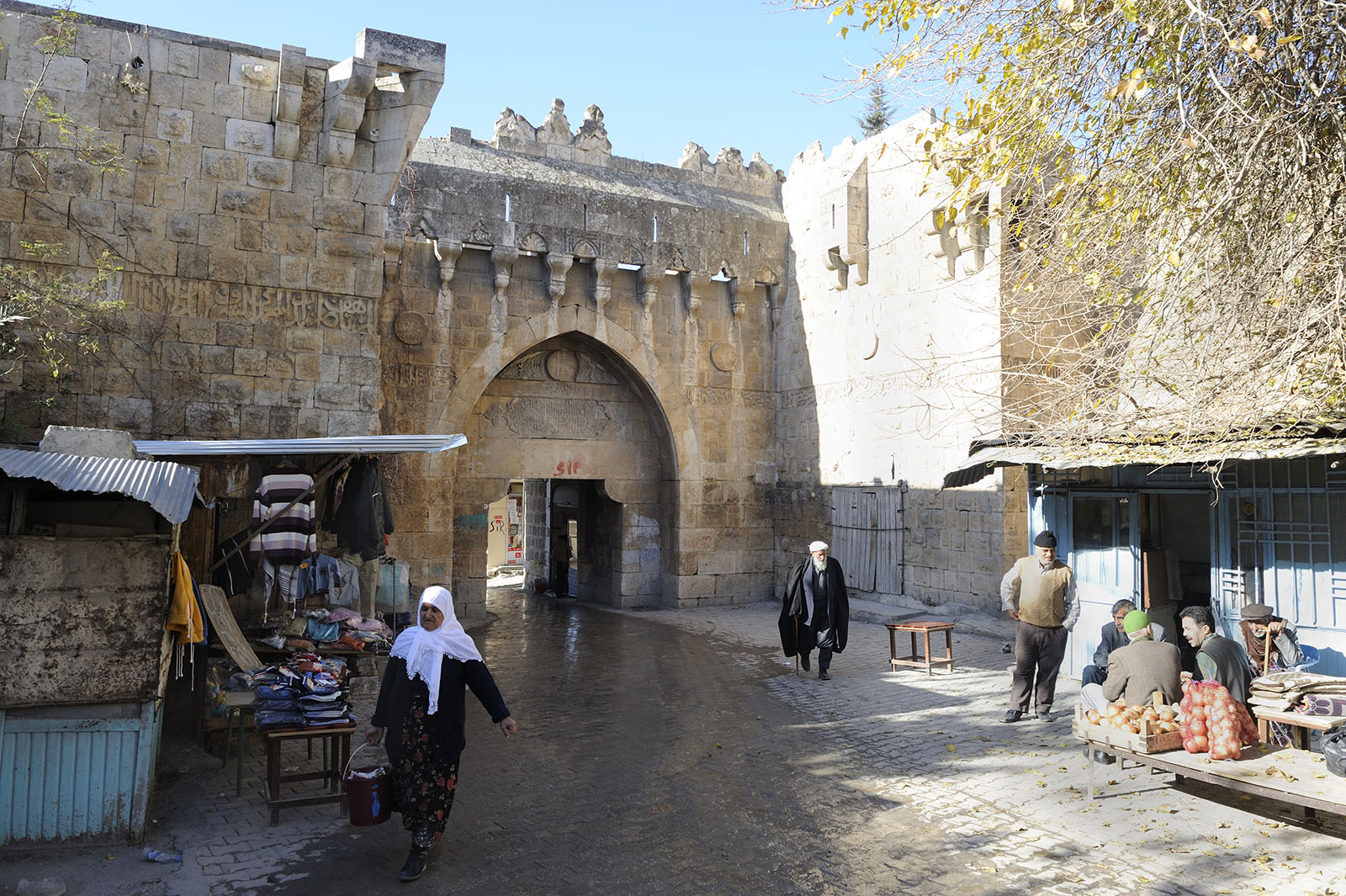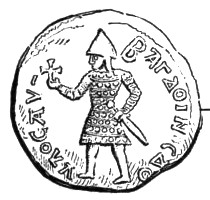|
Ablgharib
Ablgharib () was Armenian lord of Birejik and chief of the Pahlavuni clan. He was installed as governor of Birejik by Baldwin I following the crushing of an Armenian conspiracy in 1098. He joined Baldwin I and Kogh Vasil in their campaign in the north to lift Mawdud's siege on Edessa Edessa (; grc, Ἔδεσσα, Édessa) was an ancient city (''polis'') in Upper Mesopotamia, founded during the Hellenistic period by King Seleucus I Nicator (), founder of the Seleucid Empire. It later became capital of the Kingdom of Osroene ... in 1110. Finally, he was displaced by Baldwin II, following a year of siege, in 1117. Baldwin II gave Birejik to his cousin Waleran of Le Puiset, who married another of Ablgharib's daughters. References Sources * * * * * * 11th-century Armenian people Christians of the First Crusade Armenian Apostolic Christians {{noble-stub ... [...More Info...] [...Related Items...] OR: [Wikipedia] [Google] [Baidu] |
Birecik
Birecik; ku, Bêrecûk is a town and district of Şanlıurfa Province of Turkey, on the Euphrates. Built on a limestone cliff 400 ft. high on the left/east bank of the Euphrates, "at the upper part of a reach of that river, which runs nearly north-south, and just below a sharp bend in the stream, where it follows that course after coming from a long reach flowing more from the west". Etymology The historical name of the town, ''al-Bīra'' in Arabic and ''Bīreh'' in Syriac, derives from the Aramaic ''Bīrthā'', meaning fortress. It later evolved to ''Birecik'' with the addition of the Turkish diminutive suffix, ''cik''. It is called ''Belejik'' amongst the local population. Archaeology Birecik Dam Cemetery is an Early Bronze Age cemetery near Birecik. It was used extensively for about 500 years at the beginning of the third millennium BC. More than 300 graves were excavated here in 1997 and 1998. The site was discovered during the building of the Birecik Dam as part of the ... [...More Info...] [...Related Items...] OR: [Wikipedia] [Google] [Baidu] |
Pahlavuni
Pahlavuni ( hy, Պահլավունի; classical orthography: Պահլաւունի) was an Armenian noble family, a branch of the Kamsarakan, that rose to prominence in the late 10th century during the last years of the Bagratuni monarchy. Origins The Pahlavunis (also spelled Pahlavounis) were an offshoot of the Kamsarakan noble house, which had ceased to exist as a result of a failed uprising against the Arab rule in Armenia, in the late 8th century. In 774 the nature of the Arab rule had provoked the Armenian nakharars into a major rebellion which included the Kamsarakans. The defeat of the rebels at the Battle of Bagrevand in April 775 was followed by ruthless suppression of opposition in the years that followed. The power and influence of the Kamsarakans along with other leading nakharar houses such as the Mamikonians and the Gnunis was destroyed for good. Those that survived were either exiles in the Byzantine Empire or dependants of other houses, chiefly the Artsruni and ... [...More Info...] [...Related Items...] OR: [Wikipedia] [Google] [Baidu] |
Baldwin I Of Jerusalem
Baldwin I, also known as Baldwin of Boulogne (1060s – 2April 1118), was the first count of Edessa from 1098 to 1100, and king of Jerusalem from 1100 to his death in 1118. He was the youngest son of Eustace II, Count of Boulogne, and Ida of Lorraine and married a Norman noblewoman, Godehilde of Tosny. He received the County of Verdun in 1096, but he soon joined the crusader army of his brother Godfrey of Bouillon and became one of the most successful commanders of the First Crusade. While the main crusader army was marching across Asia Minor in 1097, Baldwin and the Norman Tancred launched a separate expedition against Cilicia. Tancred tried to capture Tarsus in September, but Baldwin forced him to leave it, which gave rise to an enduring conflict between them. Baldwin seized important fortresses in the lands to the west of the Euphrates with the assistance of local Armenians. Thoros of Edessa invited him to come to Edessa to fight against the Seljuks. Taking advantage of a rio ... [...More Info...] [...Related Items...] OR: [Wikipedia] [Google] [Baidu] |
Kogh Vasil
Kogh Vasil, or Vasil the Robber (; died on 12 October 1112), was the Armenian ruler of Raban and Kaisun at the time of the First Crusade. In the early 12th century, he was the most influential Armenian ruler who adhered to the Armenian Apostolic Church , native_name_lang = hy , icon = Armenian Apostolic Church logo.svg , icon_width = 100px , icon_alt = , image = Էջմիածնի_Մայր_Տաճար.jpg , imagewidth = 250px , a .... He was succeeded by his adopted son, Vasil Dgha. References Sources * * * 11th-century Armenian people 11th-century Byzantine people 1112 deaths Armenian Apostolic Christians {{Turkey-hist-stub ... [...More Info...] [...Related Items...] OR: [Wikipedia] [Google] [Baidu] |
Mawdud
Mawdud ibn Altuntash ( ar, شرف الدولة المودود) (also spelled Maudud or Sharaf al-Dawla Mawdûd) (died October 2, 1113) was a Turkic military leader who was atabeg of Mosul from 1109 to 1113. He organized several expeditions to reconquer lands from the Crusaders, but never succeeded. Biography Mawdud was an officer of Muhammad I Tapar who sent him to reconquer Mosul from the rebel atabeg Jawali Saqawa. After his conquest of the city, Mehmed entrusted him with several military attempts to push back the Crusaders from the nearby Principality of Antioch and County of Edessa. The first attempt was launched in 1110; having joined forces with Ilghazi, the emir of Mardin, and of Sökmen el-Kutbî, emir of Ahlat, they began by besieging Edessa from April of that year, but Baldwin I of Jerusalem intervened, and forced Mawdud to retreat. The following year Mawdud marched against Edessa, but as the city walls had been quickly strengthened, he preferred to lay siege to the town ... [...More Info...] [...Related Items...] OR: [Wikipedia] [Google] [Baidu] |
Edessa
Edessa (; grc, Ἔδεσσα, Édessa) was an ancient city (''polis'') in Upper Mesopotamia, founded during the Hellenistic period by King Seleucus I Nicator (), founder of the Seleucid Empire. It later became capital of the Kingdom of Osroene, and continued as capital of the Roman province of Osroene. In Late Antiquity, it became a prominent center of Christian learning and seat of the Catechetical School of Edessa. During the Crusades, it was the capital of the County of Edessa. The city was situated on the banks of the Daysan River (; ), a tributary of the Khabur, and was defended by Şanlıurfa Castle, the high central citadel. Ancient Edessa is the predecessor of modern Urfa ( tr, Şanlıurfa; ku, Riha; ar, الرُّهَا, ar-Ruhā; hy, Ուռհա, Urha), in the Şanlıurfa Province, Turkey. Modern names of the city are likely derived from Urhay or Orhay ( syc, ܐܘܪܗܝ, ʾŪrhāy / ʾŌrhāy), the site's Syriac name before the re-foundation of the settlement by S ... [...More Info...] [...Related Items...] OR: [Wikipedia] [Google] [Baidu] |
Baldwin II Of Jerusalem
Baldwin II, also known as Baldwin of Bourcq or Bourg (; – 21August 1131), was Count of Edessa from 1100 to 1118, and King of Jerusalem from 1118 until his death. He accompanied his cousins Godfrey of Bouillon and Baldwin of Boulogne to the Holy Land during the First Crusade. He succeeded Baldwin of Boulogne as the second count of Edessa when he left the county for Jerusalem following his brother's death. He was captured at the Battle of Harran in 1104. He was held first by Sökmen of Mardin, then by Jikirmish of Mosul, and finally by Jawali Saqawa. During his captivity, Tancred, the Crusader ruler of the Principality of Antioch, and Tancred's cousin, Richard of Salerno, governed Edessa as Baldwin's regents. Baldwin was ransomed by his cousin, Joscelin of Courtenay, lord of Turbessel, in the summer of 1108. Tancred attempted to retain Edessa, but Bernard of Valence, the Latin patriarch of Antioch, persuaded him to restore the county to Baldwin. Baldwin allied with Jawali, ... [...More Info...] [...Related Items...] OR: [Wikipedia] [Google] [Baidu] |
Waleran Of Le Puiset
Waleran (Galéran) of Le Puiset (d. in prison 1126), son of Hugh I of Le Puiset and Alice de Montlhéry (daughter of Guy I of Montlhéry). Seigneur of Birejik. He is quoted in a donation made ''circa'' 1102 by his brother Hugh to the abbey of Saint-Martin-des-Champs. He went to fight in the Holy Land at the service of Baldwin of Bourg, Count of Edessa, in the army of Bohemond of Taranto. From 1115, he decided to eliminate the Armenian nobility of the county after several Armenian plots to deliver Edessa to the Turks. After having subjected and exiled Kogh Vasil, Baldwin attacked Abu'lgharib Artsuni, Lord of Birejik. A compromise is reached, whereby Abu'lgharib delivered the city and exiled himself into Cilician Armenia. Baldwin then gave the fief of Birejik and the hand of the daughter of Abu'lgharib to Waleran. King Baldwin I of Jerusalem died in 1118, and Baldwin II, Count of Edessa, succeeded him, with the help of Joscelin I of Courtenay Joscelin of Courtenay (or Jo ... [...More Info...] [...Related Items...] OR: [Wikipedia] [Google] [Baidu] |
11th-century Armenian People
The 11th century is the period from 1001 ( MI) through 1100 ( MC) in accordance with the Julian calendar, and the 1st century of the 2nd millennium. In the history of Europe, this period is considered the early part of the High Middle Ages. There was, after a brief ascendancy, a sudden decline of Byzantine power and a rise of Norman domination over much of Europe, along with the prominent role in Europe of notably influential popes. Christendom experienced a formal schism in this century which had been developing over previous centuries between the Latin West and Byzantine East, causing a split in its two largest denominations to this day: Roman Catholicism and Eastern Orthodoxy. In Song dynasty China and the classical Islamic world, this century marked the high point for both classical Chinese civilization, science and technology, and classical Islamic science, philosophy, technology and literature. Rival political factions at the Song dynasty court created strife amongst t ... [...More Info...] [...Related Items...] OR: [Wikipedia] [Google] [Baidu] |
Christians Of The First Crusade
Christians () are people who follow or adhere to Christianity, a monotheistic Abrahamic religion based on the life and teachings of Jesus Christ. The words ''Christ'' and ''Christian'' derive from the Koine Greek title ''Christós'' (Χριστός), a translation of the Biblical Hebrew term ''mashiach'' (מָשִׁיחַ) (usually rendered as ''messiah'' in English). While there are diverse interpretations of Christianity which sometimes conflict, they are united in believing that Jesus has a unique significance. The term ''Christian'' used as an adjective is descriptive of anything associated with Christianity or Christian churches, or in a proverbial sense "all that is noble, and good, and Christ-like." It does not have a meaning of 'of Christ' or 'related or pertaining to Christ'. According to a 2011 Pew Research Center survey, there were 2.2 billion Christians around the world in 2010, up from about 600 million in 1910. Today, about 37% of all Christians live in the Ameri ... [...More Info...] [...Related Items...] OR: [Wikipedia] [Google] [Baidu] |




